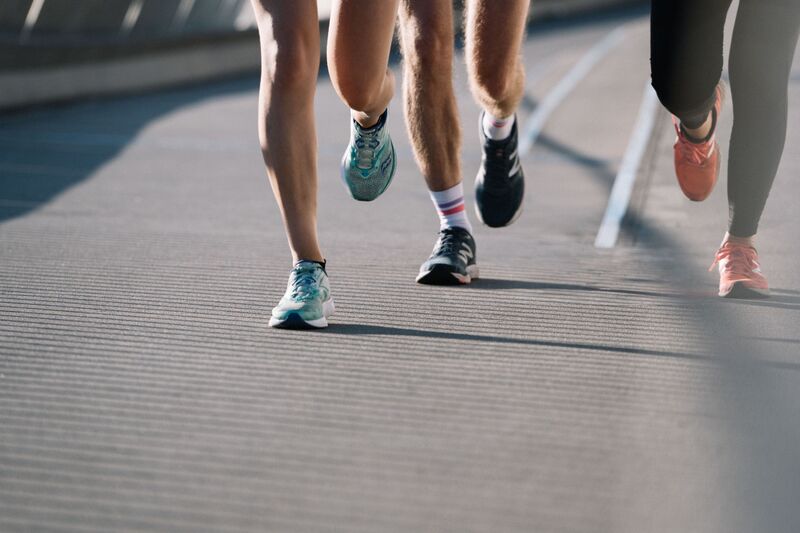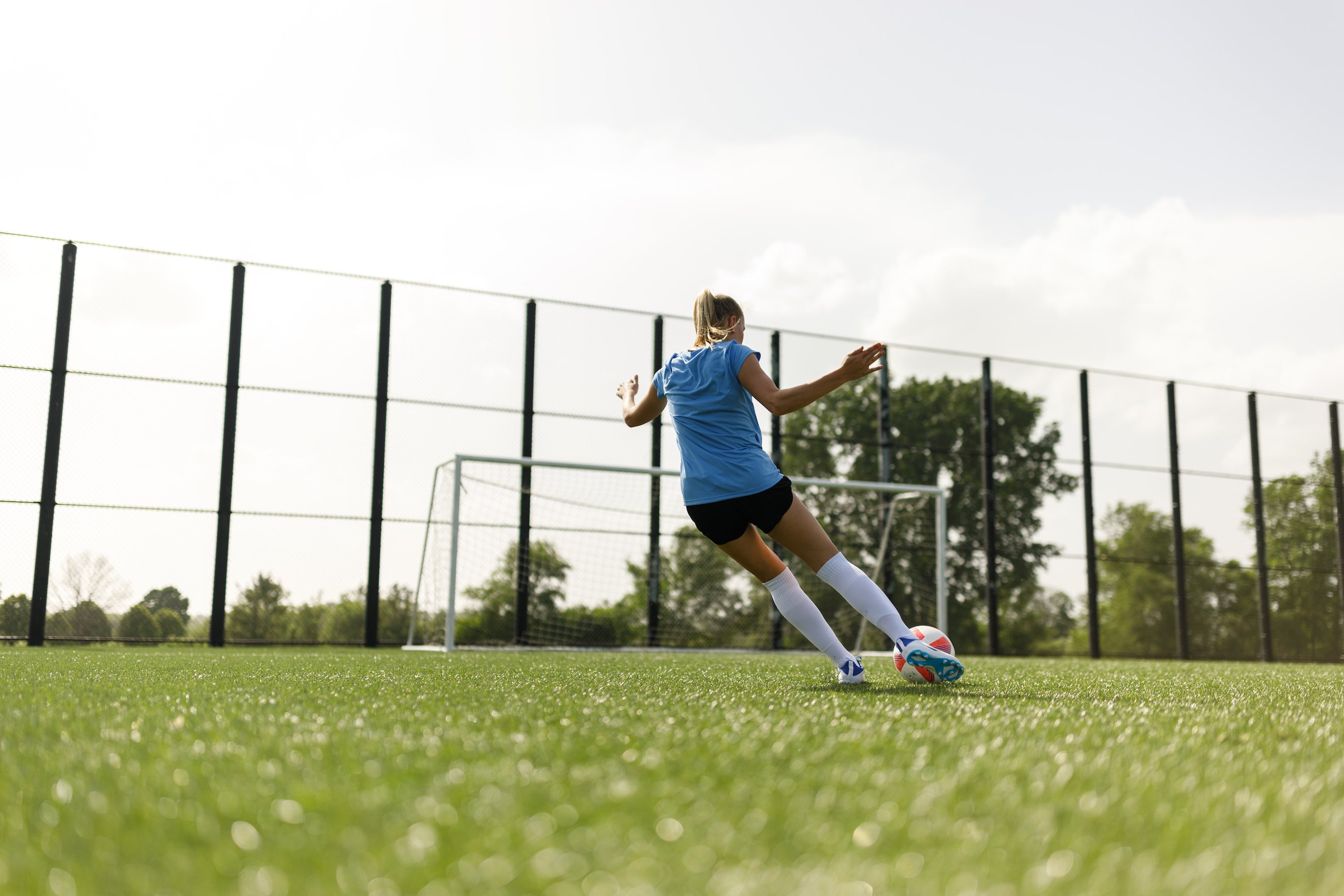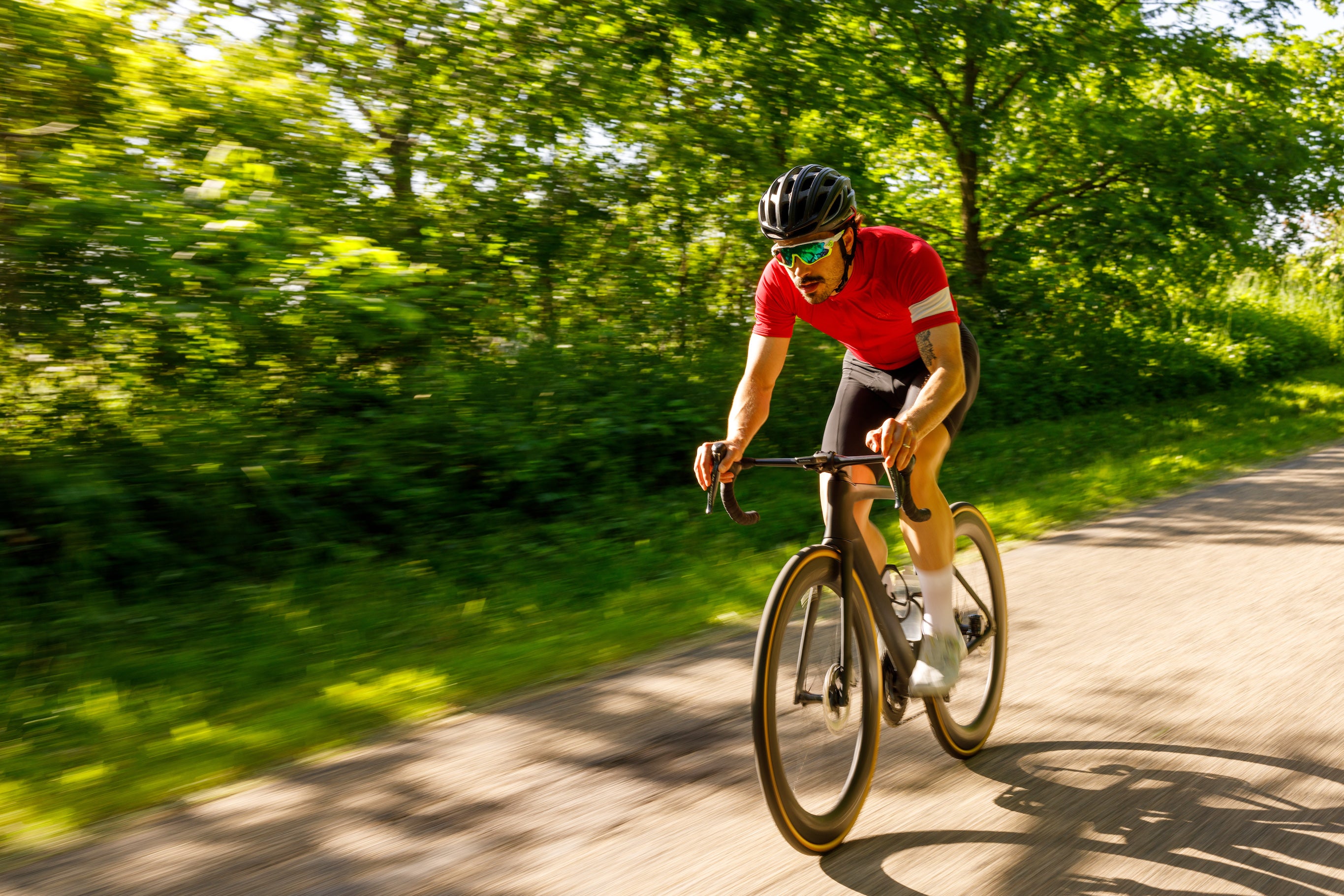Start running without complaints

How to find the right running shoe for you and start your training without discomfort
You don't know how to find the right running shoe or are afraid of making the wrong choice and increasing the risk of injury? In this article, we would like to give you some guidance on buying running shoes so that even inexperienced runners can get started in the world of running without any discomfort.

What counts when buying running shoes
Sports retailers offer a wide variety of analyses. You can find high-tech movement laboratories or the naked eye of the salesperson analyzes your footprint and your running behavior. Both are options that will help you choose the right running shoe. However, it is not always necessary to carry out a detailed and elaborate movement analysis. Depending on the level and training goal of the runner, this may or may not be necessary.
In particular, runners who go running for half an hour a week for the first time do not initially need a complex movement analysis.
Find the right size
Once you start looking, you will quickly realize that there is a huge selection of manufacturers and running shoes. All models are different and the size given is not always an indication of the right shoe. A very simple test can be used to determine the correct size. You put the shoe on and if a thumb fits in the back, you shouldn't have any problems. If your feet are different sizes, use the longer foot as a guide.

Fit and feel are crucial
Various studies have confirmed that injuries are minimized if the shoe is perceived as comfortable. But what does comfort mean? It's about personal perception and functional stability. When you put them on and take your first steps, you should already feel comfortable and secure. It's best to try out several models. You have to decide for yourself whether you prefer a little more cushioning or whether you prefer a softer shoe or a harder midsole. These are your own experiences that can help you make the right choice.

Flat, flat or splayed feet: no reason for orthopaedic insoles
Don't worry so much about your foot type. Have you already been fitted with insoles to straighten your foot? Then it usually happens that you put the insole in your shoe, go for a run and are confronted with the following problems: after a few kilometers you have a blister under your foot, you can no longer feel your feet or it simply hurts because the insole is so hard.
Our joints move with the least resistance. More precisely, in the habitual or familiar path of movement. If you stay on this path, you move economically and efficiently. An orthopaedic foot orthosis disrupts this path. The original idea was that the foot orthosis should counteract a "problem". Unfortunately, problems can then occur in other areas because you fall into an avoidance pattern. With a hard insole, only the foot changes its position in isolation. But you can't straighten your body from below, the muscles have to do that.

Improve movement in the long term
The muscular and postural apparatus is crucial for a sustainable improvement in our movements. Despite the fact that so much is happening in terms of development and shoe technology, our bodies seem to be degenerating. The best and most sustainable solution would be to run barefoot on grass to activate the nerves and foot muscles. Unfortunately, the ground is usually asphalted. Physiotherapists, on the other hand, always tell us to do foot exercises. In the evening when brushing our teeth, for example, we should grab a towel with our toes. But let's be honest: very few of us do that. So we have to find a solution in our shoes in everyday life and during sport to support the neuro-muscular control of our body. Nervously "wrong" movement patterns must be broken and a "better" sequence learned. This has to happen actively 70 percent of the time.

More comfort through insoles
A little help can be provided from below to improve the fit and feel or to activate the foot nerves. When choosing running shoes, you should make sure that they are flexible. Natural pronation, i.e. the inward rotation of the foot, should be possible, as this serves as part of the body's own cushioning.
Just like shoes, insoles should be dynamic and give way under load. Such flexible insoles adapt to the feet and the musculoskeletal system and improve the fit. The shoe is definitely more comfortable and at the same time the nerves are sustainably activated.
And studies show that those who find their shoes comfortable have less discomfort when running and are less likely to injure themselves. It's best to listen to your individual gut and foot feeling rather than outside voices.

DISCOVER THE CURREX RUNPRO
Become part of @currex.de and share your #currexmoment with us.









